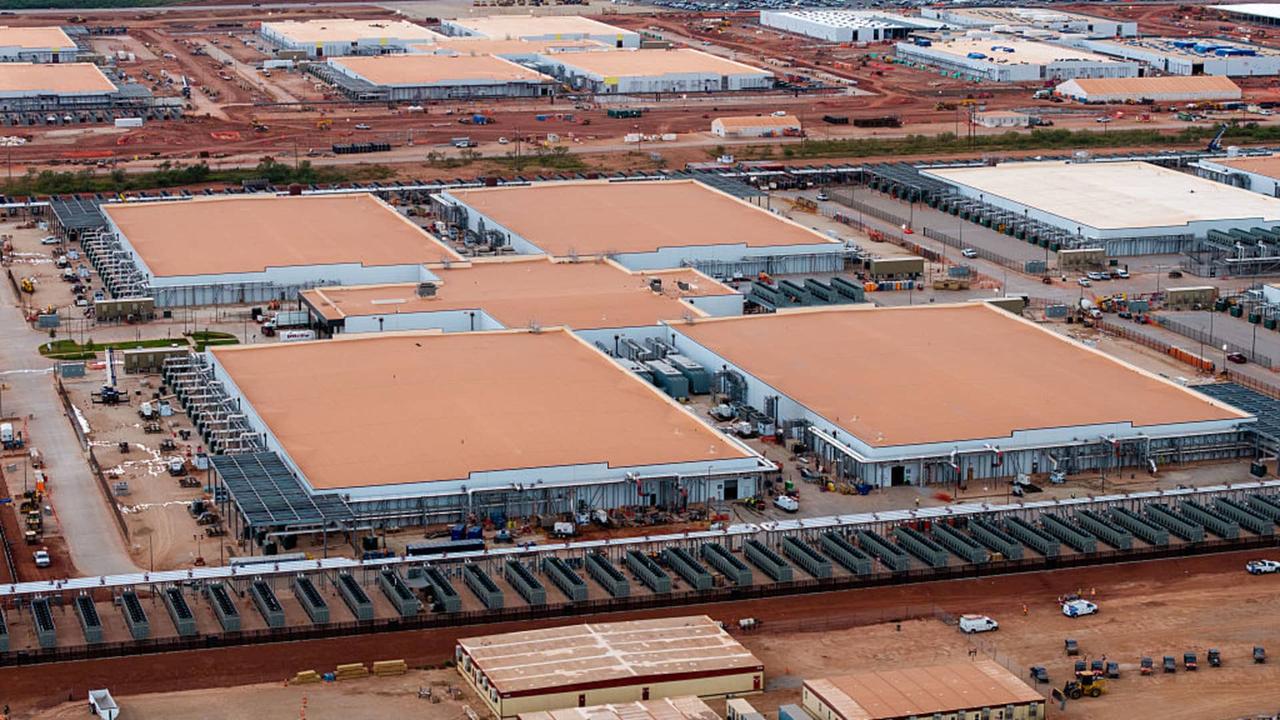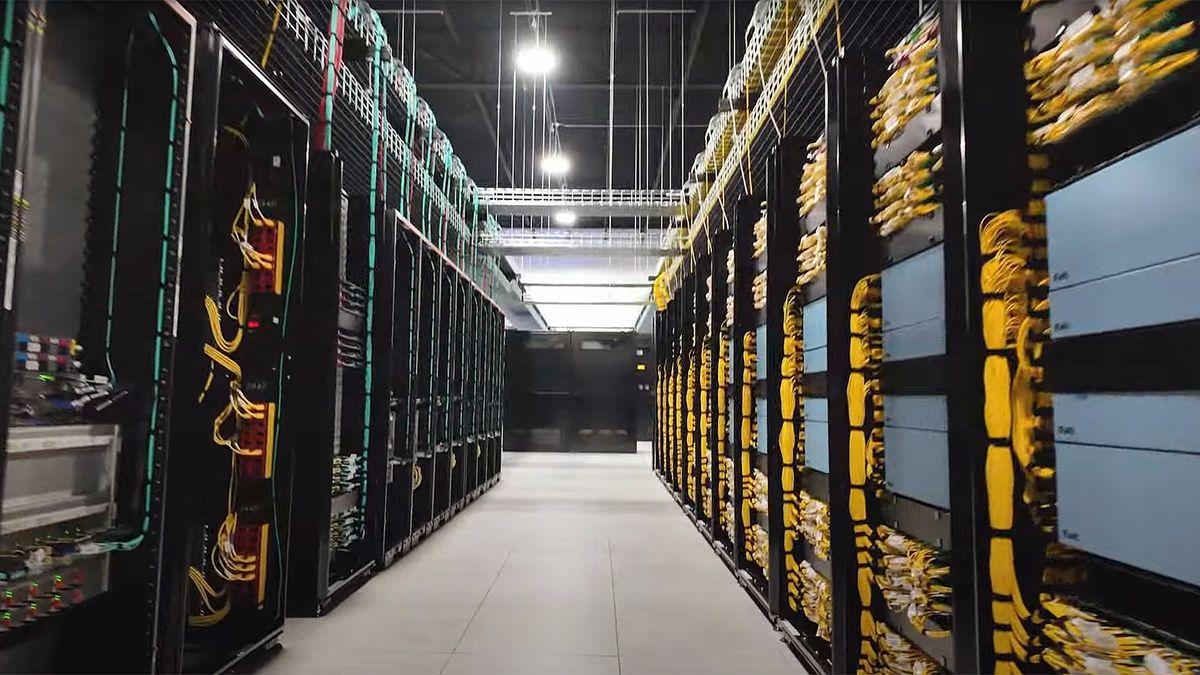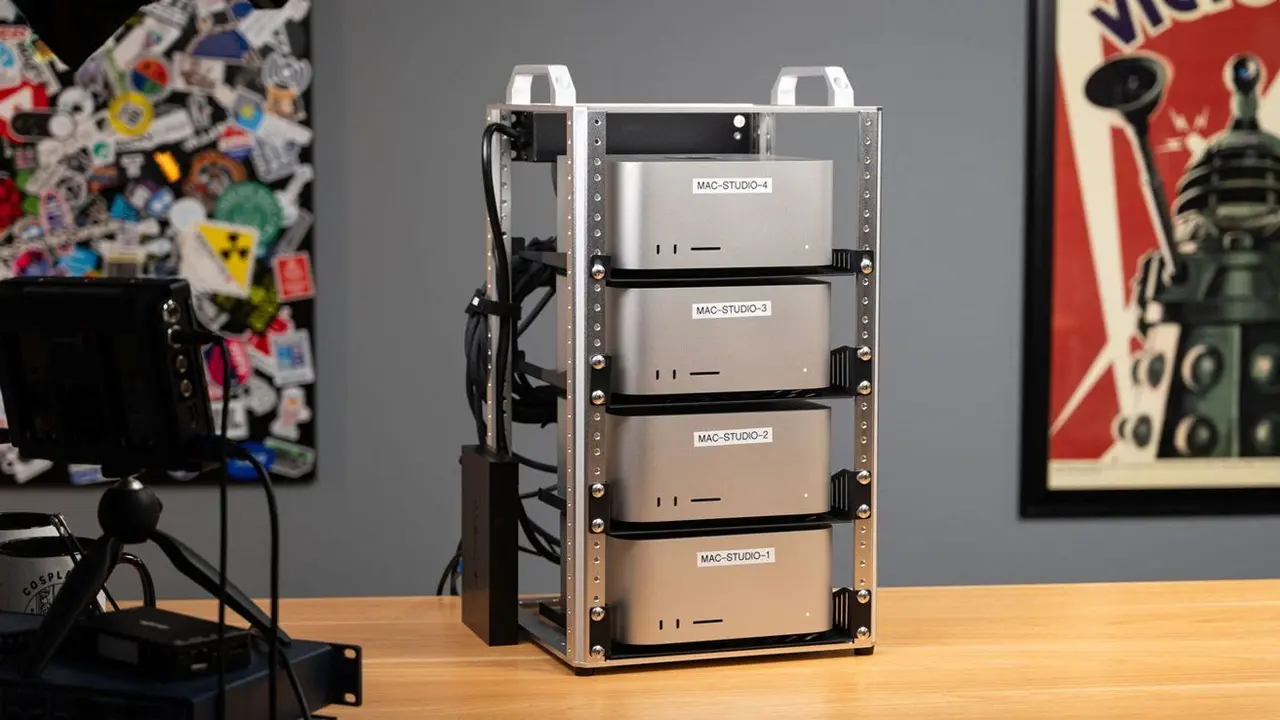Oracle's AI Cloud Ambitions Face Profitability Challenges Amid Thin Margins
4 Sources
4 Sources
[1]
Oracle stock slips 5% on report company is seeing thin cloud margins from Nvidia chips
The Stargate AI data center under construction in Abilene, Texas, US, on Tuesday, Sept. 23, 2025. Stargate is a collaboration of OpenAI, Oracle and SoftBank, with promotional support from President Donald Trump, to build data centers and other infrastructure for artificial intelligence throughout the US. Oracle stock slipped 5% on Tuesday after a report from The Information that raised questions about the company's plans to buy billions of Nvidia chips to rent as a cloud provider to clients like OpenAI. Oracle had 14% gross margins on $900 million in sales in its Nvidia cloud business in the three months ending in August, according to the report, which cited internal documents. That's significantly lower than Oracle's overall gross margin of around 70%. The report said that Oracle's recent transformation into one of the most important cloud and artificial intelligence companies may run into profitability challenges because of how expensive Nvidia chips are and aggressive pricing on its AI chip rentals. In September, Oracle said that its backlog of cloud contracts, which it called remaining performance obligations, had jumped 359% in a year. It forecasted $144 billion in cloud infrastructure revenue in 2030, up from just over $10 billion in 2025. Much of that forecasted revenue is from Oracle's role in the Stargate project, in which the enterprise vendor is working with OpenAI to open five massive data centers filled with AI chips from Nvidia.
[2]
Oracle's documents show financial challenges of renting out Nvidia's chips
Oracle's (NYSE:ORCL) internal documents showed that the fast-growing cloud business has thin gross profit margins in the past year or so, lower than what many equity analysts have forecast, The Information reported. This could raise questions about if the AI Oracle's expanding GPU cloud business has thin gross profit margins, and as its share grows relative to traditional software, Oracle's overall gross profit margins are expected to decline from previous levels around 70%. Low margins are driven by high costs of running Nvidia-powered data centers, required discounts to win AI clients, reliance on leased data centers, expensive new hardware rollouts, and underutilized server capacity before clients fully ramp up usage. A large majority of Oracle's GPU cloud business revenue comes from a small set of customers -- primarily OpenAI and four others -- creating significant concentration risk similar to peers like CoreWeave and Lambda.
[3]
Oracle stock falls after report reveals thin margins in AI cloud business By Investing.com
Investing.com -- Oracle (NYSE:ORCL) stock fell as much as 7% Tuesday following a report from The Information that revealed the company's AI cloud business operates with razor-thin gross profit margins, potentially challenging the profitability of its ambitious AI expansion. According to internal documents cited in the report, Oracle generated approximately $900 million from rentals of servers powered by Nvidia (NASDAQ:NVDA) chips in the three months ending in August, with a gross profit of just $125 million - translating to a 14% gross margin. This figure is lower than many non-tech retail businesses and falls below what many equity analysts have estimated. The documents showed that while sales from Oracle's AI cloud server business nearly tripled over the past year, gross profit margins fluctuated between less than 10% and slightly over 20%, averaging around 16%. The report also indicated that Oracle is losing "considerable sums" on rentals of small quantities of both newer and older versions of Nvidia's chips. The 14% gross margin figure reportedly accounts for labor, power, and other direct costs of running Oracle data centers, including some depreciation expenses for equipment. Additional unspecified depreciation expenses would reduce the margin by another 7 percentage points, according to the documents.
[4]
Oracle slips after doubts about profitability of its AI-related cloud business
Oracle's stock fell nearly 4% on Tuesday after The Information published an article highlighting the low profitability of its cloud division, which is powered by Nvidia chips. According to internal documents cited by the media outlet, this business generated only a 14% gross margin on $900m in revenue in the quarter ended in August, well below the group's average margin of 70%. These figures cast a shadow over Oracle's business model, despite its massive investments in artificial intelligence infrastructure. The company has spent billions of dollars acquiring Nvidia GPUs to lease to customers such as OpenAI, but the high cost of the hardware and an aggressive pricing policy are weighing on profitability. In September, however, Oracle posted a spectacular 359% increase in its remaining performance obligations, reflecting a rapidly expanding order book. The group is now targeting $144bn in cloud revenue by 2030, up from just over $10bn forecast for this year. A significant part of these ambitions rests on the Stargate project, a joint venture with OpenAI and SoftBank supported by the Trump administration, which plans to build five giant data centers dedicated to AI, notably in Texas. But according to The Information, this rapid ramp-up exposes Oracle to sustained pressure on its margins as the group attempts to balance its growth objectives with the profitability of its cloud expansion.
Share
Share
Copy Link
Oracle's stock drops as reports reveal low profit margins in its AI cloud business. The company's massive investment in Nvidia chips for AI infrastructure raises questions about the sustainability of its ambitious expansion plans.
Oracle's AI Cloud Ambitions Hit Profitability Hurdle
Oracle, a major player in the enterprise software market, is facing significant challenges in its ambitious AI cloud expansion. Recent reports have shed light on the company's struggle to maintain profitability in its rapidly growing AI-focused cloud business, causing a ripple effect in the stock market and raising questions about the sustainability of its strategy.
Thin Margins Raise Concerns

Source: Seeking Alpha
According to internal documents cited by The Information, Oracle's AI cloud business, which relies heavily on Nvidia GPU rentals, is operating with surprisingly thin margins
1
. In the three months ending in August, the company generated approximately $900 million in revenue from its Nvidia-powered cloud services, but with a gross profit of only $125 million – translating to a mere 14% gross margin3
.This figure stands in stark contrast to Oracle's overall gross margin of around 70%, raising eyebrows among industry analysts and investors
1
. The revelation has led to a significant drop in Oracle's stock price, with shares falling as much as 7% following the report's publication3
.Factors Contributing to Low Margins
Several factors are contributing to the low profitability of Oracle's AI cloud business:
- High costs of Nvidia chips and data center operations
- Aggressive pricing strategy to win AI clients
- Reliance on leased data centers
- Expensive new hardware rollouts
- Underutilized server capacity during client ramp-up periods
2
Related Stories
Ambitious Growth Plans vs. Profitability Concerns

Source: CNBC
Despite these challenges, Oracle remains committed to its AI-driven growth strategy. The company has forecasted a staggering $144 billion in cloud infrastructure revenue by 2030, up from just over $10 billion in 2025
1
. This ambitious target is largely based on Oracle's involvement in the Stargate project, a collaboration with OpenAI and SoftBank to build five massive AI-focused data centers across the United States4
.Customer Concentration Risk
Adding to the concerns is the high concentration of Oracle's GPU cloud business revenue. A majority of the revenue comes from a small set of customers, primarily OpenAI and four others, creating a significant concentration risk similar to that faced by competitors like CoreWeave and Lambda
2
.As Oracle continues its rapid expansion into the AI cloud market, the company faces the challenging task of balancing growth objectives with profitability. The success of this strategy will likely depend on Oracle's ability to optimize its operations, manage costs effectively, and potentially adjust its pricing model to ensure long-term sustainability in the highly competitive AI infrastructure market.
References
Summarized by
Navi
[3]
Related Stories
Oracle delays OpenAI AI data centers to 2028 as labor shortages test infrastructure ambitions
12 Dec 2025•Business and Economy

Oracle's AI Gamble Triggers Market Concerns as Debt Soars Past $100 Billion
17 Nov 2025•Business and Economy

Oracle's Q3 Earnings: AI Drives Growth Despite Missing Wall Street Expectations
11 Mar 2025•Business and Economy

Recent Highlights
1
Google launches Gemini 3 Flash as default AI model, delivering speed with Pro-grade reasoning
Technology

2
OpenAI launches GPT Image 1.5 as AI image generator war with Google intensifies
Technology

3
OpenAI launches ChatGPT app store, opening doors for third-party developers to build AI-powered apps
Technology





